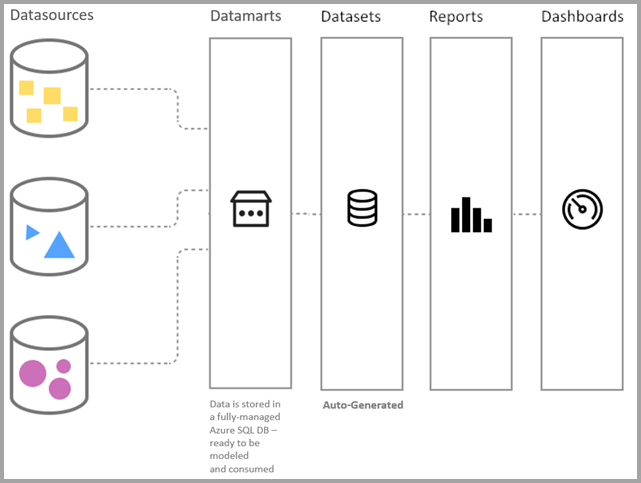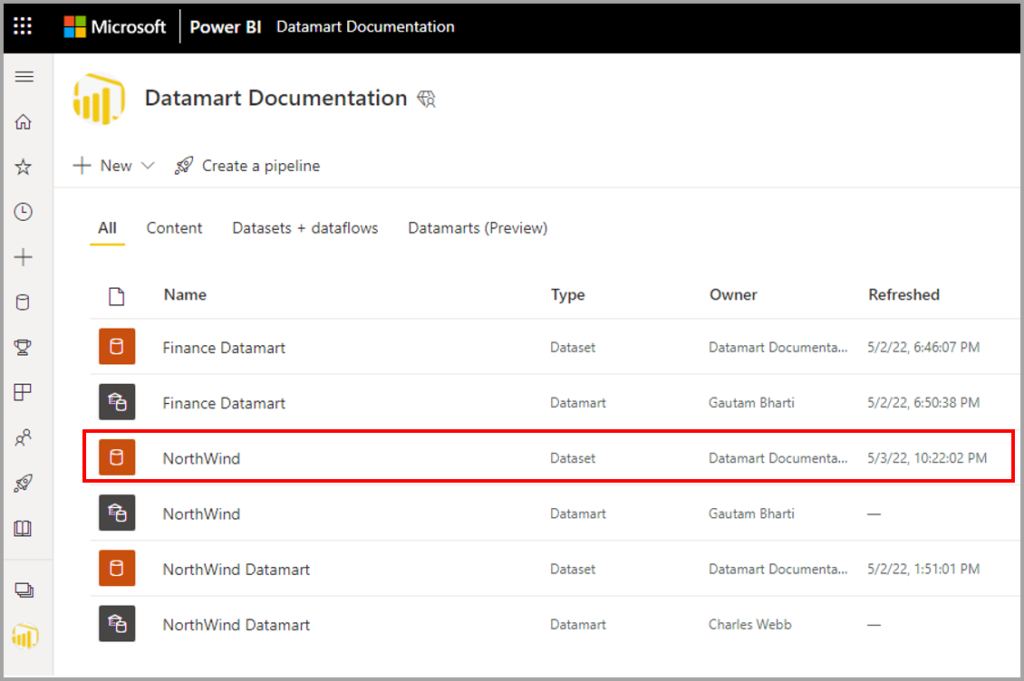Power BI Datamart
Data marts are a powerful tool in business intelligence that help organizations make better decisions by providing quick and easy access to relevant data. In Power BI, data marts allow you to create a simplified and streamlined version of your data model that is optimized for specific analytical tasks. In this blog post, we will explore the benefits of using data marts in Power BI and how to create them.

What is a Data Mart?
A data mart is a subset of a larger data warehouse that is designed to meet the specific needs of a department or team within an organization. The data mart is optimized for querying and reporting and contains a subset of the data found in the data warehouse. Data marts are used to provide quick and easy access to relevant data to specific users or groups, without the need to navigate the complex structure of the data warehouse.

Why Use Data Marts in Power BI?
Power BI is a powerful tool for data visualization and analysis, but working with large and complex data models can be challenging. Data marts provide a simplified view of the data that is optimized for specific analytical tasks. This can help to improve performance and make it easier for users to find the data they need.
Creating a Data Mart in Power BI
Creating a data mart in Power BI involves creating a new data model that is based on a subset of the data in your original data model. This can be done by selecting the relevant tables and fields and importing them into a new Power BI file. Here are the steps to create a data mart in Power BI:
1.Identify the data that you need to include in the data mart. This will depend on the specific analytical tasks that you need to perform.
2.Open Power BI and create a new file.
3.In the Home tab, select Get Data and choose the source of your data. This could be a SQL Server database, Excel file, or other data source.
4.Select the relevant tables and fields that you want to include in the data mart. You can filter the data to include only the data that you need.
5.Once you have selected the data, choose the option to Load the data into Power BI.
6.In the Power BI Desktop, you can now create new visualizations and reports based on the data in your data mart.

Conclusion
Data marts are a powerful tool for organizations that need to quickly and easily access relevant data. In Power BI, data marts can be created by selecting a subset of the data from your original data model and importing it into a new Power BI file. This simplified view of the data can help to improve performance and make it easier for users to find the data they need. By using data marts in Power BI, organizations can improve decision-making and gain valuable insights into their business operations.








